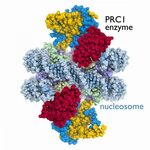Cancer Research

Women over the age of 70 with certain early-stage breast cancers don't get much benefit from radiation therapy, according to studies, but they still get it. The reason is because doctors were able to make decisions that overruled the published evidence and every patient wanted to take no chances.
Now, with government increasingly controlling health care in the United States, the search is one for ways to lessen such "defensive medicine" and cut costs. The problem is that it will be difficult to tell doctors and patients they won't get what was previously considered standard care under a…

For many men, the down sides of PSA testing outweigh the benefits. Gerald Streiter/Flickr, CC BY-NC
By Ian Haines, Monash University
Cancer Council Australia and the Prostate Cancer Foundation of Australia yesterday released new draft guidelines to help GPs counsel men who ask about prostate cancer tests. They advise GPs to explain the pros and cons of testing and, if the man wants to proceed, to give him a prostate specific antigen (PSA) blood test every two years between the ages of 50 to 69.
Over the past few decades public health messages have drummed into us that early detection and…

Androgen deprivation therapy (ADT), in which an injectable or implanted medication is used to disrupt the body's ability to make testosterone, is a common treatment for prostate cancer but should not be used in men whose cancer has not spread beyond the prostate, according to a new study.
The findings are important for men with longer life expectancies because the therapy exposes them to more adverse side effects, and it is associated with increased risk of death and deprives men of the opportunity for a cure by other methods. ADT is already known to have significant side effects such as…
Portuguese researchers have developed a new method which uses images of a protein in cells to quantify its distribution (how much protein there is, and where it is in the cell) for that population of cells.
The discovery has important medical implications because the cellular location of a protein is directly linked to its function, as proved when the new algorithm identified mutations that had the potential to lead to >human diffuse gastric cancer(HDGC).
This result is particularly important because HDGC is asymptomatic and, at the moment, its early detection is not reliable, what means…

In bean sprouts, a collection of amino acids called a protein complex allows them to grow longer in the darkness than in the light. In humans, there is a similar protein complex called CSN, and its subunit CSN6 is now believed to be a cancer-causing gene that impacts activity of another gene (Myc) tied to tumor growth.
If you were crazy enough to eat raw bean sprouts before knowing that, you have probably changed your mind. But scientifically it is fascinating that the same mechanisms that result in bigger bean sprouts also cause cancer metastasis and tumor development.
A study at…

Highly-paid environmental lobbyists invoke Frankenstein's monster for everything, apparently never having read the novel. But there is some biology that is a little like Shelley's monster, massive DNA molecules stitched together from other parts of the genome that appear in some tumors, according to a new study.
Writing in Cancer Cell, the authors say their finding solves a decades-old mystery and explains how these tumors ensure their own survival. The discovery also identified a potential drug target for treating cancers that are well known to harbor these molecules, dubbed '…

The location of oral cancers differ in smokers and nonsmokers and nonsmokers have a higher proportion of cancers occur on the edge of the tongue, according to a new paper in JAMA Otolaryngology-Head&Neck Surgery.
Researcher Brendan J. Perry, B.Sc. M.B.B.S, of the Princess Alexandra Hospital, Brisbane, Australia, and fellow co-authors sough to examine whether oral cavity cancers occurred more commonly at sites of dental trauma and how that varied between nonsmokers without major identified carcinogens and smokers. Their study was an analysis of patients with oral cavity or oropharyngeal…

By 2030, nearly 10 percent of colon cancers and nearly 25 percent of rectal cancers will be diagnosed in patients younger than the traditional screening age. This growing public health problem is underscored by data trends among 20- to 34-year-olds in the U.S., among whom the incidence of colon and rectal cancer (CRC) is expected to increase by 90% and 124.2%, respectively, by 2030.
Nearly 137,000 people will be diagnosed with
colon and rectal cancer
in the U.S. this year, and more than 50,000 will die of the disease.
colon and rectal cancer
is the third most common cancer among men and…

A research team has produced a detailed working image of an enzyme in the Polycomb Repressive Complex 1 (PRC1) related to the BRCA1 breast-cancer protein. PRC1 regulates cell development and is associated with many types of cancer because enzymes like PRC1 turn on or turn off the activity of genes in a cell by manipulating individual chromosome units called nucleosomes.
The researchers obtained the first crystal structure of a gene-regulation enzyme while it is working on a nucleosome. The image reveals previously unknown information about how the enzyme attaches to its…

Men who have had sex with more than 20 women have a 28% lower risk of getting prostate cancer than those who have had only one partner - but males having more than 20 male partners face a 100% higher risk of getting prostate cancer than those who have never slept with a man.
The results were obtained as part of the Montreal study PROtEuS (Prostate Cancer&Environment Study), in which 3,208 men responded to a questionnaire on, amongst other things, their sex lives. Of these men, 1,590 were diagnosed with prostate cancer between September 2005 and August 2009, while 1,618…